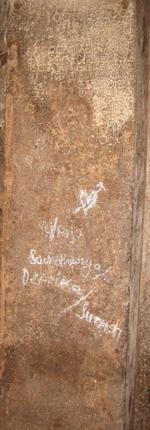Lessons of Life Engrained in Stone

Chennai, July 18, 2013: Dismissed as scribbles on the wall, the inscriptions on the walls and floors of temples in Tamil Nadu have a precarious existence because they are considered useless by pilgrims and temple authorities.
Their only hope for survival are the history and economics teachers in the state but they are the ones who are probably most oblivious to the stories that these ‘scribbles’ tell. Every inscription has a message to us – about a historical, economic, administrative or legal record. Gifts to the temple, legal judgments, taxation, accounts, criminal proceedings are also recorded.
Read carefully, these inscriptions will not only evoke a mental image of life in medieval Tamil Nadu but also teach students how problems that they face at their work place were handled in the past. Even in this digital age, inscriptions are easy to locate if only teachers and students make the effort.
Tamil Nadu’s oldest inscription dates back to the third century BC. Found in Mangulam, near Madurai, the inscription is in the Brahmi script - a more primitive version of Tamil. Leaving the origins of the script to scholars, suffice it to say that it was this script that was used by Asoka for his edicts as for merchants and others in the south for inscriptions till the early part of the Christian era.
Sanskrit was popular
From the fifth century onwards, with the Pallava conquest in Kanchi, Tiruchi, Mahabalipuram and other areas they built in, languages such as Sanskrit and Prakrit became more popular. With Tamil increasing in popularity from the eighth century, Telugu in the 16th and finally from the 19th century, paper being the new mode of record keeping, inscriptions on temples became less interesting.
Something Tamil Nadu has to be proud of is the number of inscriptions [seen in various temples]. Despite this unique credit, this special and unique source of history remains distant from daily academics in school.
Inscriptions are of two types – those that record gifts and others which record important decisions for the welfare of the village and its inhabitants.
Gifts are those of the king or the court as well as commoners. Sometimes, the same pillar or wall will have a gift of priceless jewels given by a king as well as the humble gift of a few cows by a potter.
Inscriptions are excellent teachers of how we can all write and communicate better. They clearly mention, who has given what, when and where and how the gift must be used. Many also go one step further and give procedures for any untoward exigencies that may occur.
It is hoped that this column on inscriptions and sculptures encourage readers, especially students and teachers to view our inscriptions and art from a different light and help relate history to the lives we lead today and tomorrow.
Source: The Hindu, DT, July 18, 2013.







